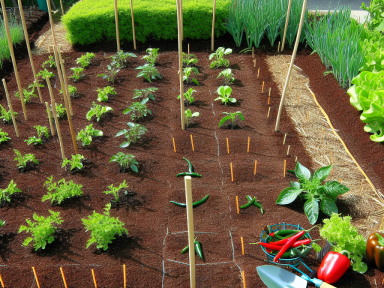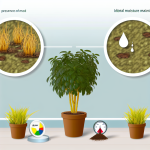Understanding Your Space
Maximizing your garden’s potential begins with a thorough understanding of your available space. Whether you have a large backyard or a modest balcony, knowing the dimensions and soil quality will inform your planting strategy.
- Measure your garden area: Take detailed measurements and sketch out a layout. This will serve as your blueprint.
- Assess soil quality: Test your soil’s pH and nutrient levels. Amend the soil as necessary with compost or other organic matter.
- Observe sunlight patterns: Track how sunlight moves across your gardening space throughout the day. Different plants have varying light requirements.
Companion Planting
Utilize companion planting to make the most out of your space and resources. This method involves planting different crops in proximity for mutual benefits.
Examples of Companion Planting
- Tomatoes and Basil: Basil repels insects that typically attack tomatoes and can improve tomato yield and flavor.
- Carrots and Onions: The strong smell of onions deters carrot flies, while carrots help aerate the soil for onion bulbs.
- Corn, Beans, and Squash: This trio, known as the “Three Sisters,” supports each other’s growth. Corn stalks provide a trellis for beans, beans fix nitrogen in the soil, and squash’s large leaves act as a mulch to reduce weeds.
Succession Planting
One of the keys to maximizing yield in a limited space is succession planting. This strategy involves planting crops in a sequence to ensure a continuous harvest throughout the growing season.
- Early Spring: Start with cold-tolerant crops like lettuce, radishes, and peas.
- Late Spring: As the early crops are harvested, plant summer crops such as tomatoes, peppers, and cucumbers.
- Late Summer: As space becomes available, plant autumn crops like spinach, kale, and beets.
Vertical Gardening
When horizontal space is limited, consider vertical gardening techniques. Vertical gardening not only saves space but can also enhance air circulation and reduce pest issues.
Vertical Gardening Techniques
- Trellises: Use for climbing plants like peas, beans, and cucumbers.
- Wall planters: Ideal for herbs and small vegetables.
- Hanging baskets: Perfect for strawberries, cherry tomatoes, and trailing herbs.
Mulching for Efficiency
Applying mulch can improve soil moisture retention, reduce weed growth, and enhance soil fertility.
- Organic mulches: Like straw, shredded leaves, and compost will decompose over time, adding nutrients to the soil.
- Inorganic mulches: Such as gravel or landscape fabric can be used for pathways or areas where you do not plan to change plantings frequently.
Rainwater Harvesting
Efficient water use is crucial for a sustainable garden. Rainwater harvesting allows you to collect and utilize natural rainfall, reducing reliance on municipal water systems.
- Install rain barrels: Place them at the end of downspouts to collect runoff from your roof.
- Use drip irrigation: Connected to your rain barrel for efficient watering directly at the plant base.
- Implement smart watering schedules: Water during the early morning or late evening to minimize evaporation.
Integrated Pest Management (IPM)
To protect your plants without relying on harmful chemicals, implement Integrated Pest Management (IPM) practices.
- Monitor and identify pests: Regularly inspect your plants to catch problems early.
- Use biological controls: Introduce beneficial insects such as ladybugs and predatory mites.
- Employ physical barriers: Such as row covers and netting to keep pests away.
Optimize Plant Spacing
Proper plant spacing is vital for healthy growth and maximum yield. Crowded plants compete for resources, while overly spaced plants waste valuable garden real estate.
- Follow seed packet guidelines: They often provide optimal spacing recommendations based on years of research.
- Practice thinning: Remove weaker seedlings to give stronger ones room to grow.
Utilize Raised Beds
Raised beds offer several benefits including improved soil drainage, reduced weed pressure, and easier access for planting and harvesting.
- Build raised beds: Using untreated wood, bricks, or recycled materials.
- Fill with quality soil: Combine garden soil with compost and other organic amendments.




GIPHY App Key not set. Please check settings